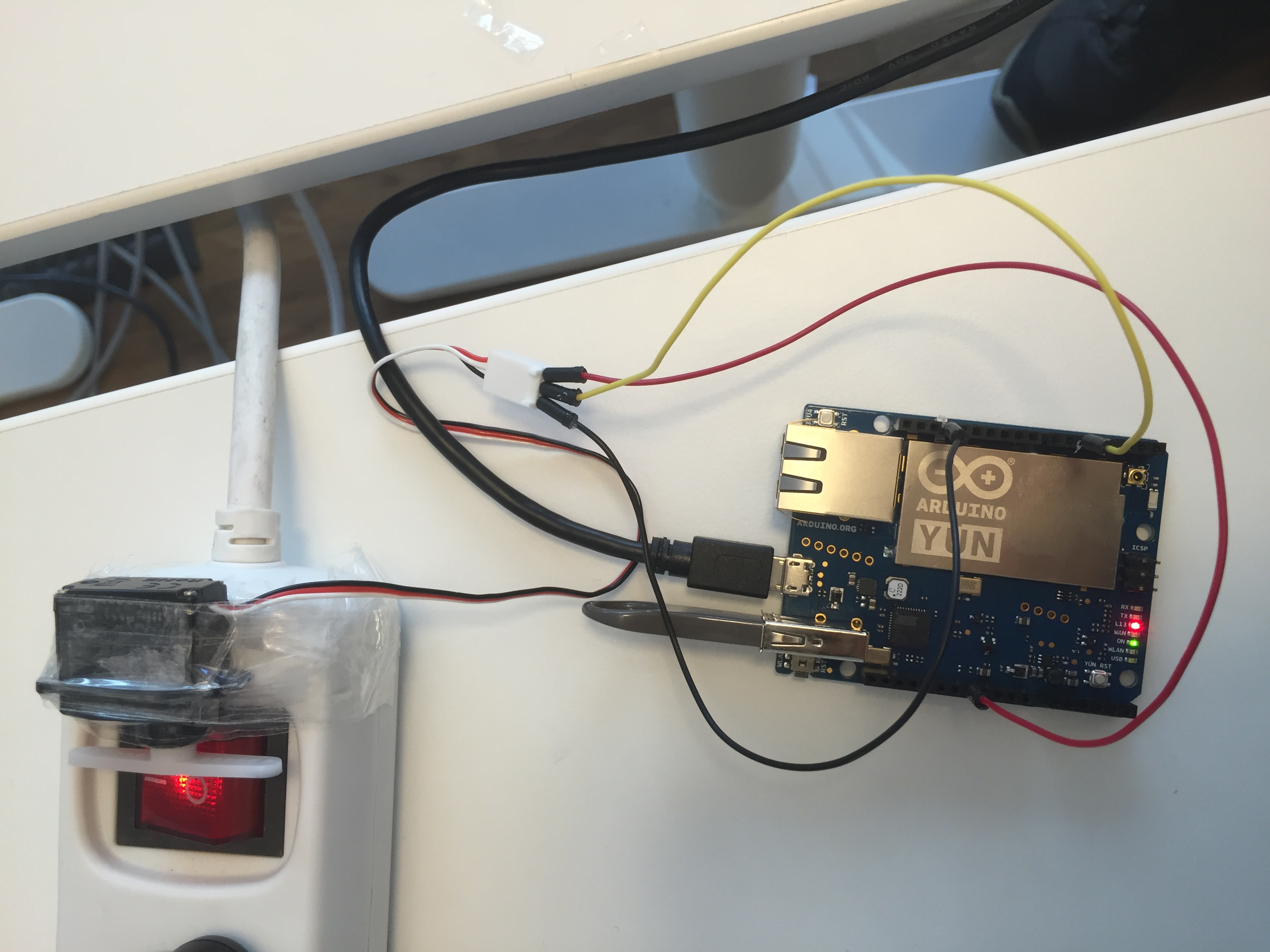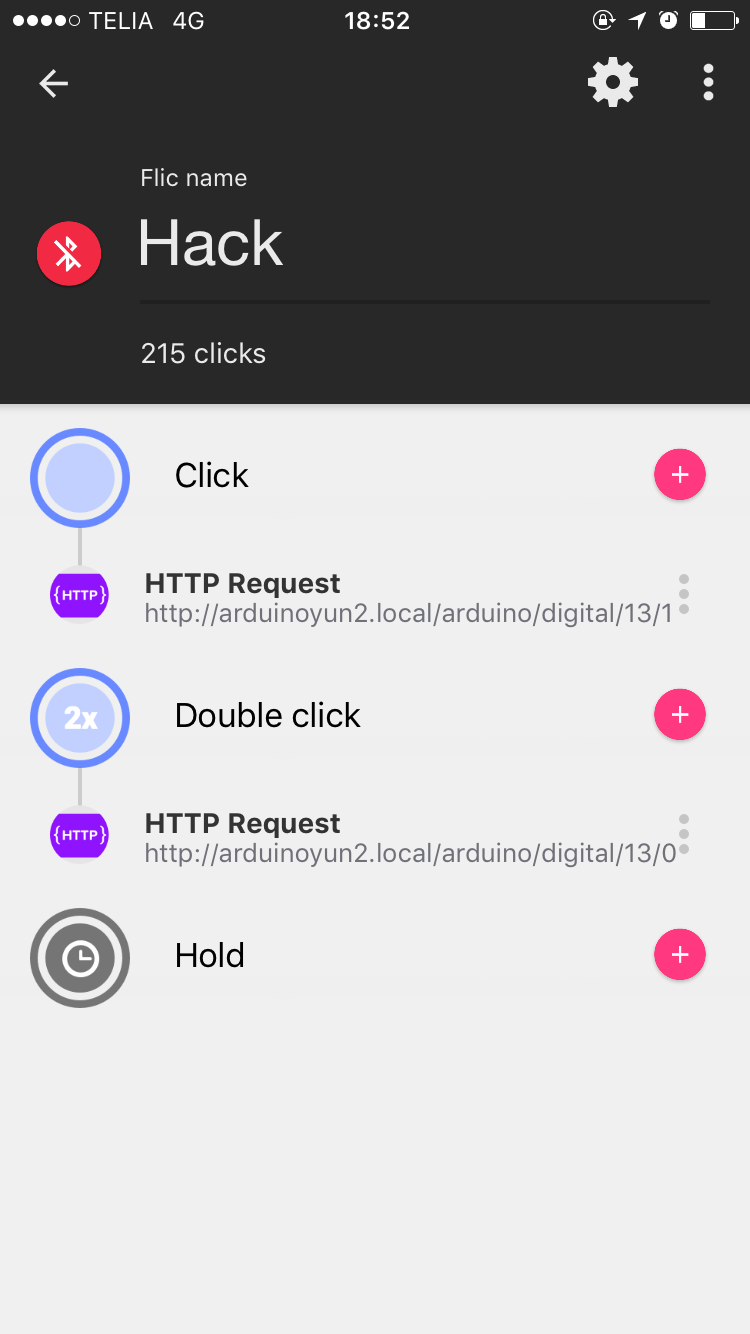The basic idea is to turn on/off a physical button. Our experiment turns out to be using Arduino yun, flic to control a power strip.
- Arduino yun board
- Jumper wires
- Mini servo
- Power strip
- Connect Arduino Yun with WiFi network
- Connect phone with the same network
- Open Flic app in the phone and set up click with HTTP request
#include <Bridge.h>
#include <BridgeServer.h>
#include <BridgeClient.h>
#include <Servo.h>
// Listen to the default port 5555, the Yún webserver
// will forward there all the HTTP requests you send
BridgeServer server;
Servo myservo;
void setup() {
// Bridge startup
pinMode(13, OUTPUT);
digitalWrite(13, LOW);
Bridge.begin();
digitalWrite(13, HIGH);
// Listen for incoming connection only from localhost
// (no one from the external network could connect)
server.listenOnLocalhost();
server.begin();
myservo.attach(5);
}
void loop() {
// Get clients coming from server
BridgeClient client = server.accept();
// There is a new client?
if (client) {
// Process request
process(client);
// Close connection and free resources.
client.stop();
}
delay(50); // Poll every 50ms
}
void process(BridgeClient client) {
// read the command
String command = client.readStringUntil('/');
// is "digital" command?
if (command == "digital") {
digitalCommand(client);
}
}
void digitalCommand(BridgeClient client) {
int pin, value;
// Read pin number
pin = client.parseInt();
// If the next character is a '/' it means we have an URL
// with a value like: "/digital/13/1"
if (client.read() == '/') {
value = client.parseInt();
turnServo(value);
} else {
client.println("can not read value");
}
// Send feedback to client
client.print(F("Pin D"));
client.print(pin);
client.print(F(" set to "));
client.println(value);
}
void turnServo(int value) {
//turn off is closewise
if(value == 1) {
myservo.write(180);
} else {
myservo.write(0);
}
delay(500);
myservo.write(90);
delay(500);
}


